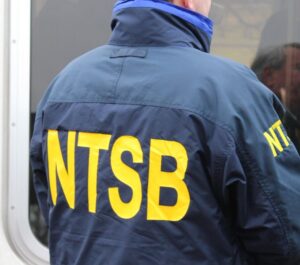Why A Church Consultant Is Like An NTSB Crash Scene Investigator
One of my favorite TV programs is Air Disasters on the Smithsonian Channel. I’m not sure why. Maybe it’s simply morbid curiosity. (I’m not sure what that says about me.) But every week catastrophic incidents in aviation history are meticulously re-enacted, providing insight into what went wrong and if the crashes and near-disasters could have been prevented.
Accounts from survivors combine with computer images to weave these gripping tales, and expert testimony reveals the reasons behind these events, some of which have resulted in significant changes to aviation safety and regulations.
 Each episode features one, lead investigator on the scene from the National Transportation Safety Board (NTSB) who’s in charge. That person’s job it is to figure out what went wrong and recommend safeguards so it won’t happen again. It’s a very important role.
Each episode features one, lead investigator on the scene from the National Transportation Safety Board (NTSB) who’s in charge. That person’s job it is to figure out what went wrong and recommend safeguards so it won’t happen again. It’s a very important role.
As the president of the Society for Church Consulting, I help advance and revitalize churches by training leaders and certifying consultants. A trained and certified church consultant is a lot like the lead investigator at the scene of an air disaster. Here are some reasons why.
Data Driven
Just as the lead investigator gathers and analyzes information from the flight data recorder, listens to cockpit voice recordings, and uses computer generated reenactments to get a fact-based, cognitive picture of exactly what happened, a church consultant uses hard data from congregational surveys to help discover possible reasons for the present, difficult situation the church is experiencing.
Eyewitness Accounts
Just as the lead investigator interviews surviving pilots, flight crew, and passengers, as well as air traffic controllers, ground crew, mechanics and aviation experts, a church consultant conducts personal interviews with pastors, staff, leaders, and attendees to discover what is actually happening at the church.
Background Research
The lead investigator reviews training manuals, examines maintenance records, and analyses weather patterns from the day of the accident. Similarly, a church consultant studies the churches bylaws and constitution, its budget, and utilizes psychographic and demographic studies to understand the background and contributing environmental factors the church is facing.
Conclusions Formed
In the Air Disasters TV show, the initial conclusion formed is typically wrong. In reality, it’s often many, complicated factors, besides gravity, that contribute to the disaster. Likewise, a church consultant will need to dig deep into the history, culture, relationships, structure, and present ministry realities to discover the real reason the church needs help. It’s only after a significant amount of careful research that a consultant can reach an accurate conclusion.
Final Report
At the end of each episode the narrator gives the conclusion reached by the lead investigator. So does a church consultant. The consultant typically gives a written and verbal presentation of the consulting process, highlights from the data received, and 4-7 recommendations to address the issues. It’s up to the church leadership to accept them and implement the recommended changes.
Positive Change
The best part of the show is when the narrator explains that even though the air disaster was a devastating tragedy, it led to positive changes. Often, the entire aviation industry benefits from the conclusions reached by this process. When a church goes through a comprehensive church consultation, it can be painful. Tearing off a band aid to expose a wound usually hurts. But it leads to healing. And as church consultants share their findings through books, blogs, and best practices, the rest of the church can learn from other’s misfortunes and be revitalized, reenergized, and recommitted to better, healthier processes that glorify God and advance his kingdom.